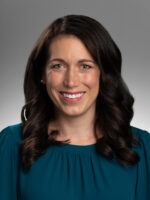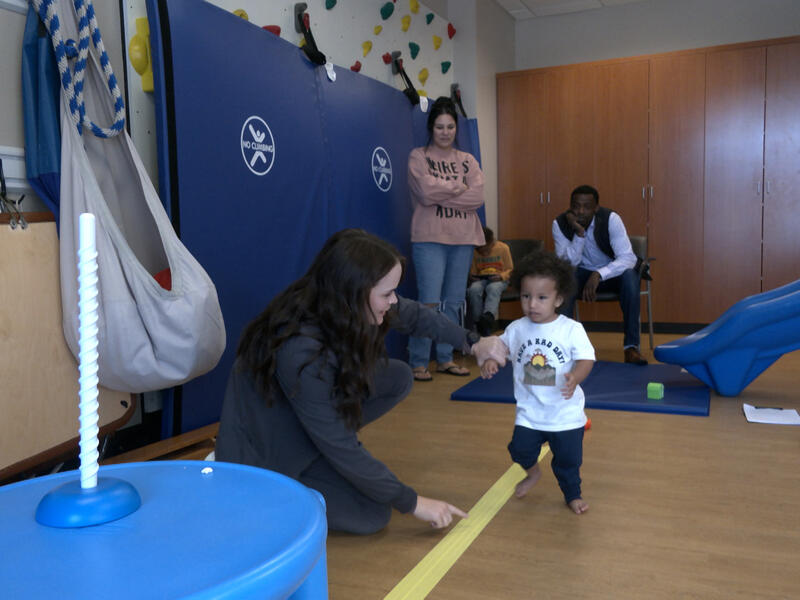Through their miracle child Eyeris Harbor, Keshia Whetsel and Joshua Harbor have learned to embrace uncertainty.
The two had a “normal” pregnancy and delivery with their first child and Eyeris’ older brother Kamar Harbor.
The pregnancy with Eyeris “was also a normal pregnancy,” Keshia Whetsel said.
Normal pregnancy, ‘rare’ birth
The family calls Sioux Falls, South Dakota, home. They didn’t think anything was out of the ordinary, or rare, with Eyeris.
“Nothing showed up, even with his pre-screening that they do. Nothing showed up or was abnormal,” she added.
Then came time to welcome Eyeris into the world.
“When he came out, he was not doing the best at all,” said Whetsel.
“He was gray. If you’ve never seen a gray baby, it’s something (that’s) very scary. He wasn’t breathing very well, and he did not cry. He did not cry at all,” added Joshua Harbor.
They stayed at the Sanford Children’s Hospital an extra day. Eyeris’ beloved genetics doctor at Sanford, Rachel Li, M.D., did more tests. Everything came back normal.
So, Eyeris went home.
“When we got home, we realized that he just would not cry. He wouldn’t wake to feed; we had to set alarms to feed him. He also had a very bent foot, several spots on him, his teeth and jaw protruded a little bit.
“The final straw was we took him in for constipation because he didn’t have a dirty diaper for a long time. We were told he looked like a failure-to-thrive baby. He had even lost some weight from when he was born,” Harbor and Whetsel said.

Not one, but two rare diseases
Eyeris was hospitalized at “the castle” for a few weeks. During that time, Eyeris underwent a thorough genetic test, specifically a whole exome sequence, according to Dr. Li.
Those results showed the rare genetic disorder Prader-Willi syndrome (PWS).
“This disorder causes low muscle tone in babies, issues with failure to thrive initially, and then developmental delay later on. When they reach age 2 to 3, they have really huge appetites and can get really obese,” she explained.
But that wasn’t the only rare disease Eyeris had.
The tests also showed Bloom syndrome, a cancer predisposition disorder.
Symptoms of Bloom syndrome include:
- Shorter than average height
- Narrow face
- Skin rash after sun exposure
“He has two really rare disorders that are just completely by chance,” said Dr. Li.
“One in 10 million,” said Harbor.
Partnering with Sanford
One rare disease diagnosis can be overwhelming, much less two, but Dr. Li said there is help at Sanford Health.
“What’s so great about ‘the castle’ is that we’re all here together and work with each other. In addition to myself to help treat his PWS, we have him on a hormone growth, which endocrine helps manage.
“He’s being seen by a dermatologist here for Bloom syndrome, because it predisposes to a lot of cancer risk. He’s also well plugged in to all of our therapy teams. He’s a little celebrity,” said Dr. Li.
Sanford Health also has resources for Josh and Keisha, and other parents who find themselves in similar situations.
“We have our complex care clinic that helps parents manage a child with a rare disorder, which can become a full-time job between therapies and appointments,” Dr. Li explained.
Committed to fighting rare diseases
Sanford Health is uniquely positioned to partner with Eyeris and his family through this diagnosis because of the health system’s commitment to rare and undiagnosed diseases.
There’s a lot that’s unknown and uncertain about the future for Eyeris. However, Dr. Li said he’s on a good path because of the work his parents and Sanford Health did to diagnose him early.
“His parents were huge advocates. He started on the growth hormone very, very early on. The growth hormone has been shown for PWS to improve developmental outcomes. So, he’s making great gains in development.
“So, I think he’s going to have a really great outcome. He’s meeting milestones and making those really good gains. Every time I see him, he’s doing something new, which is awesome,” said Dr. Li.
Eyeris is working with the Sanford Dermatology Clinic in Sioux Falls. The team is monitoring him for skin cancer symptoms, which he is at risk for with Bloom syndrome.
“We’re not 100% that he will develop it, but again, because we knew early, we can intervene and treat as soon as possible,” explained Dr. Li.
Bloom syndrome puts Eyeris at higher risk of all types of cancers, not just skin cancer. Because of this, he gets abdominal scans every few months to make sure there’s no cancer growing in his kidneys or any other part of his body.
‘You can tell they genuinely care’
Whatever the future holds, Josh Harbor and Keisha Whetsel said they’ll take it in stride and face challenges as they come.
They said they’re comforted to know they have partners like Dr. Li, and Sanford Health, on their side.
“You can tell they genuinely care. I never once felt like they were trying to pass us on. Dr. Li’s been there from the beginning. I will forever be grateful,” said Harbor.
“As far as Eyeris knows, this is life as he knows it,” said Whetsel. “He doesn’t know there’s anything wrong with him. Your child is created and beautiful just the way God intended it, or the creator you believe in. Your child doesn’t know there’s anything wrong with them, so why would you live on that? Enjoy the time that you have and the beauty that they are.”
Learn more
- Rare disease registry: Giving hope and impacting research
- Family faces multiple diagnoses for genetic condition NF1
- Netflix ‘Diagnosis’ family searches for rare disease clues
…
Posted In Children's, Dermatology, Endocrinology, Genetics, Rehabilitation & Therapy, Sioux Falls, Specialty Care

